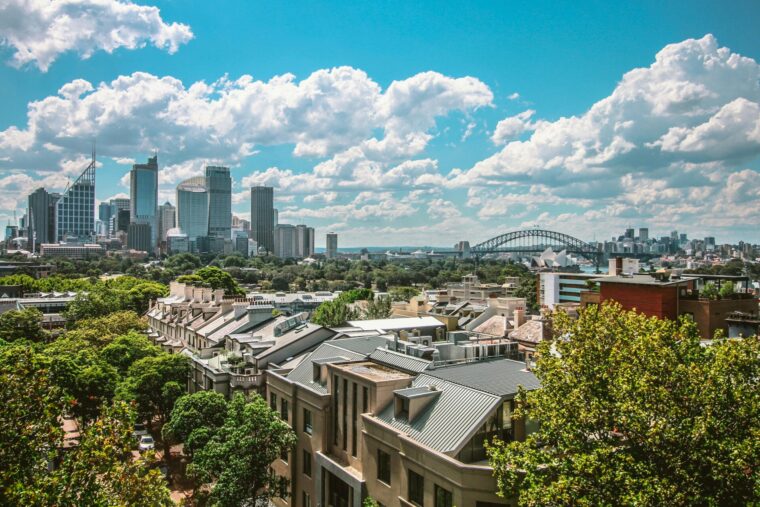Sydney has long commanded a house-price premium over Melbourne but that premium has recently hit historic extremes.
The typical house in Sydney now fetches a 70 per cent premium relative to the typical house in Melbourne. To put it another way, median house prices in Melbourne are about 41 per cent cheaper than in Sydney.
This difference in median prices was more than $600,000 in August – the cheapest houses in Melbourne have been relative to Sydney at any point in the past 20 years.
Sydney has always been Australia’s most expensive capital city, commanding a price premium over Melbourne.
One factor is housing supply – completions per capita across Victoria versus NSW have historically been higher – and this held over the past decade.
Another influence is the scarcity of land.
Notably, Sydney’s geography is more constrained by natural features like its harbour and national parks, which limit the available land for housing development.
The NSW capital’s status as a global city with robust economic fundamentals, iconic landmarks, and international appeal, has also bolstered its longstanding desirability.
Limited housing supply and strong demand, especially in desirable areas around beaches and the harbour, have driven up home values.
Costs of building are also higher in NSW, and Sydney is far more expensive on this measure than other capitals. Red tape, taxes and charges account for 50 per cent of the average new dwelling in Sydney, compared to 37 per cent in Melbourne.
Sydney’s spectacular waterfront homes are another factor that put the city ahead of Melbourne – and the premium the northern capital holds has expanded significantly over the past three years.

Melbourne underperformed throughout the pandemic and has continued to do so since then, making it the weakest performing capital city since March 2020. During the pandemic, the price increases in Melbourne were less significant compared to other cities as many left the state to escape long Covid-19 lockdowns.
After prices falls in 2022, Melbourne values remain 4.7 per cent below their 2022 peak.
The Victorian capital was the second-most expensive market for more than a decade but its recent underperformance led to the city dropping back to fourth place in the rankings of Australia’s most expensive capital cities, with both Brisbane and Canberra now ahead.
If current trends persist, values in Adelaide and Perth may eclipse Melbourne next year.
It may be hard to see a way out as economic conditions are now softer in Victoria and unemployment is slightly higher relative to NSW. But there are other forces in play, including housing completions relative to population remaining higher in Victoria.
However, land tax increases for investment properties in Victoria have hit investment and made owning investment property less attractive. More investors have been selling up in Melbourne, while the state hasn’t seen the same uplift in new lending to investors that other states have. And looking at stock on the market, buyers in Melbourne have consistently enjoyed more choice over the past year relative to Sydney.
Looking ahead, Melbourne is likely to continue to underperform relative to Sydney, and face ongoing small declines with above-average stock on market, while feeling the impact of the higher taxation environment. This is likely to continue widening the gap between Sydney and Melbourne values.
But historic swings in price performance and comparative affordability, show a time will likely arrive when Melbourne is viewed as undervalued given house prices are their cheapest relative to Sydney in a decade.
If policy changes have deterred investors and Victoria remains less attractive relative to other states, this may contribute to lower levels of new buildings as pre-sales to these buyers drop. At the same time, the cost of construction and delivering new dwellings has increased just as Victoria faces the strongest population growth of any state over the next five years.
All these factors may eventually contribute to the price gap narrowing from current historic extremes.
However, Sydney will likely always command a premium given its geographic features while Melbourne’s famed urban sprawl provides a way of meeting increased housing demand.
Originally published by Eleanor Creagh in The Australian Business Review. View article online HERE.